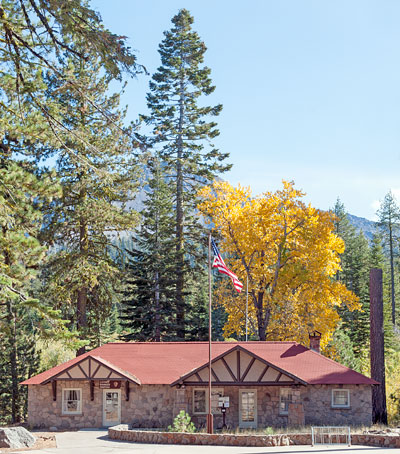National Register of Historic Places in Shasta County
Manzanita Lake Naturalist's Services Historic District
State Route 89
Lassen Volcanic National Park
The Manzanita Lake Naturalist's Services Historic District is located at the northwest entrance of Lassen Volcanic National Park.
The buildings and structures associated with this historic district represent two architectural styles: the Italian Renaissance style, elements of which are found on the Loomis Museum, and National Park Service Rustic, as developed by the National Park Service during the 1930s and 1940s.
The earliest structures were built by Benjamin and Estella Loomis who were instrumental in establishing of the park. They built the Loomis Museum and its seismograph hut in 1927 and donated these two buildings and forty acres of land to the National Park Service in 1929, They built the Loomis Art House and Manzanita Lake Ranger Station at about the same time. The house was their residence, photography studio and shop until the 1950s.
Park Service structures were developed at Manzanita Lake in the 1930s. These include the entrance station (1930), the ranger residence (1931) and the naturalist's residence (1933). The residence was built using Civilian Conservation Corps and is similar to its counterparts at Crater Lake National Park.
The area was abandoned in 1973 after a geological report indicated that a rockfall in the Chaos Crags could reach the Manzanita Lake area in 90 seconds. The Manzanita Lodge and cabins were closed and demolished. In 1987 a reassessment indicated that such a rockfall could not reach Manzanita Lake and the area was reoccupied and renovated. The lodge was never rebuilt.
Three trails contribute to the historic district: Manzanita Lake Trail, Reflection Lake Trail and Lily Pond Trail. The Nobles Emigrant Trail runs just north of the historic district.
Two water features contribute to the district: Manzanita Lake and Reflection Lake (formerly called Mud Lake). Both originated as shallow natural lakes, but were increased in volume through the use of manmade structures.
Source: NRHP nomination submitted in 2006.
